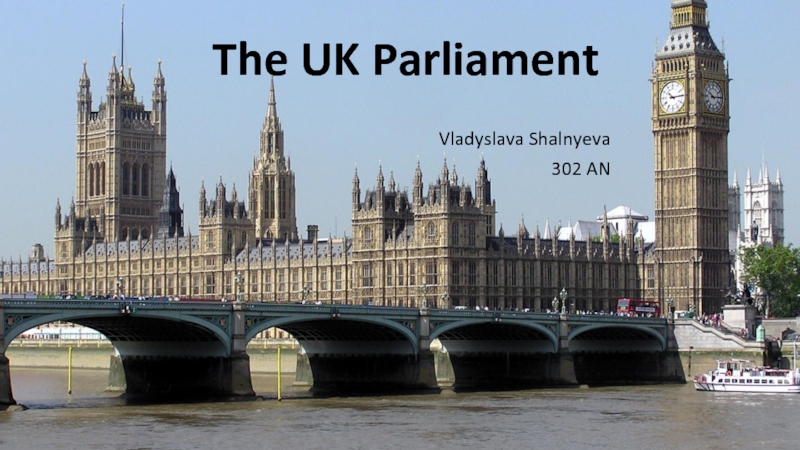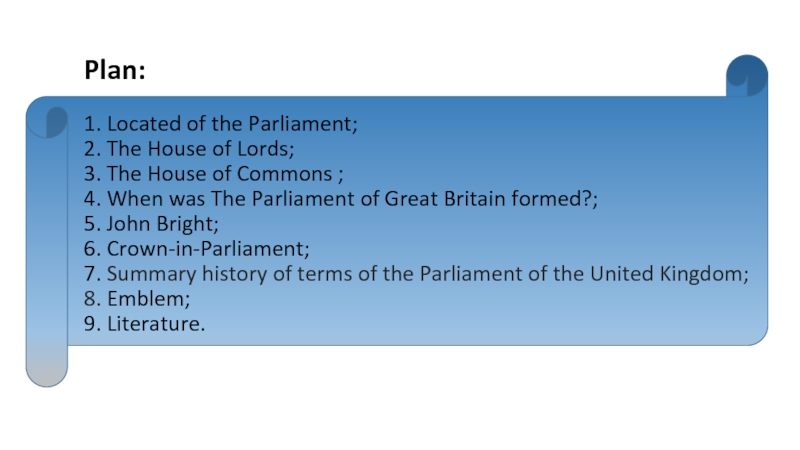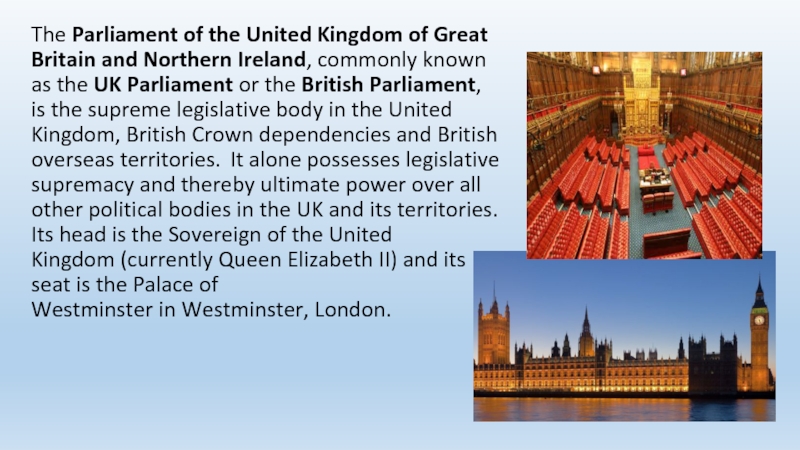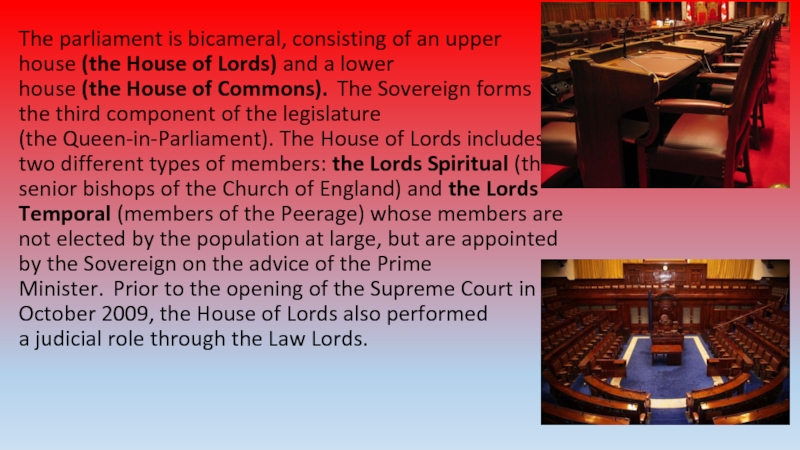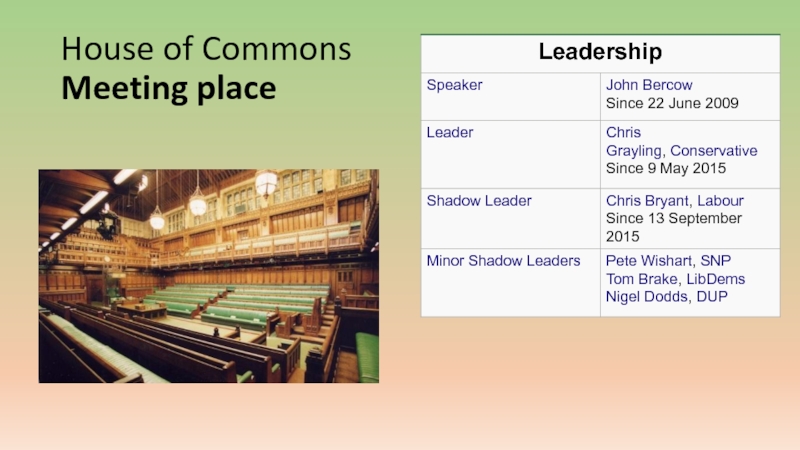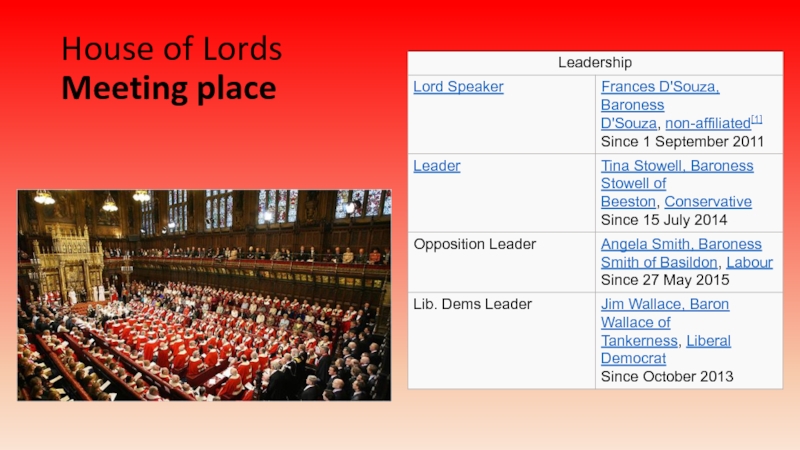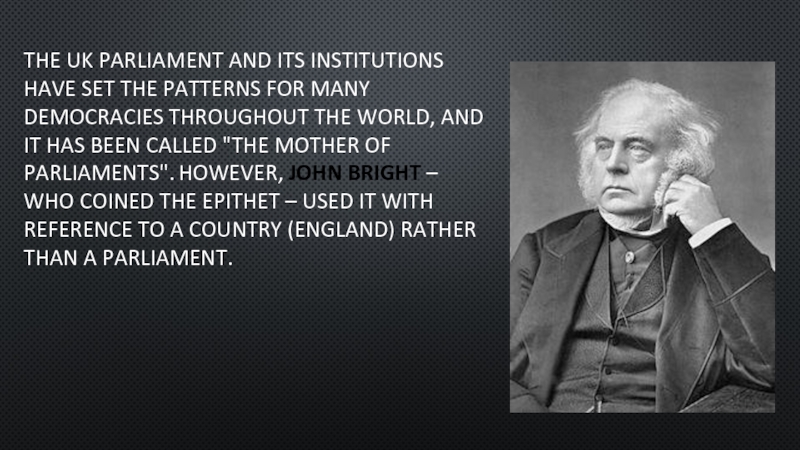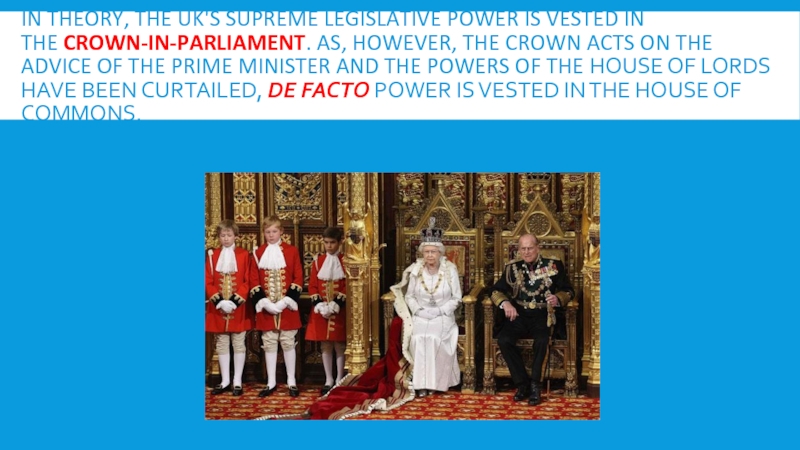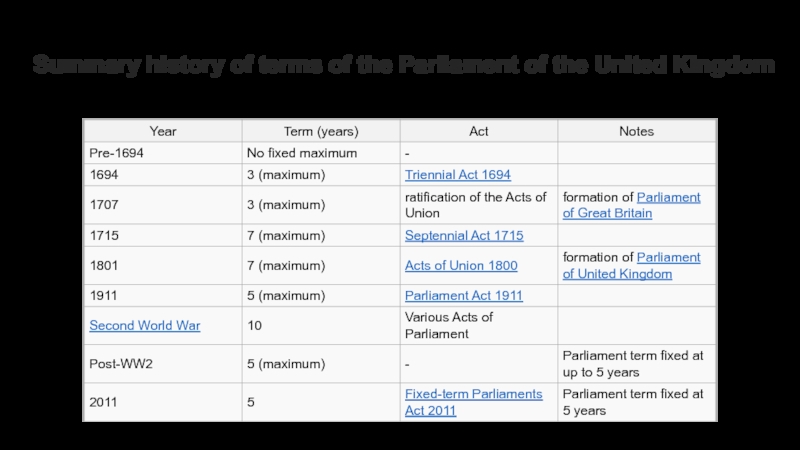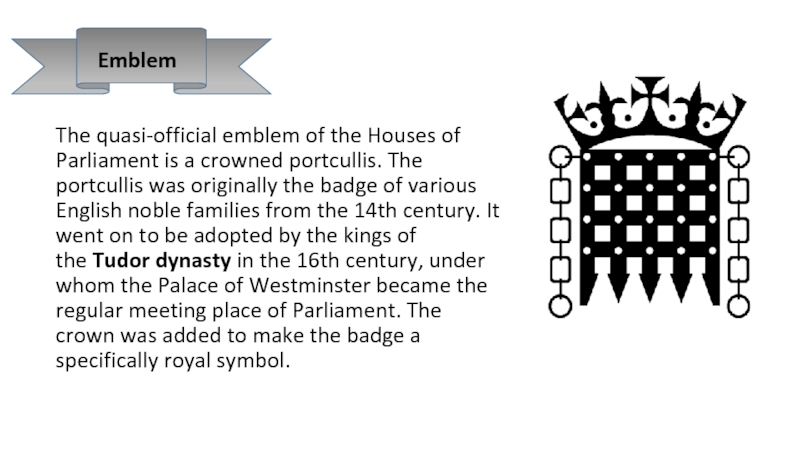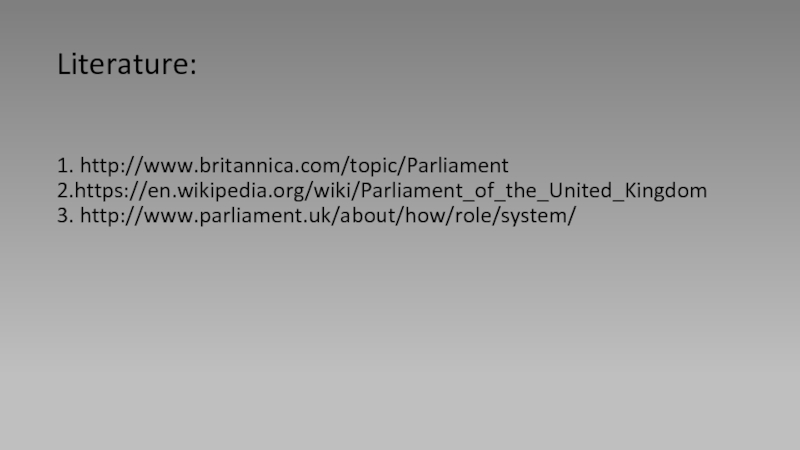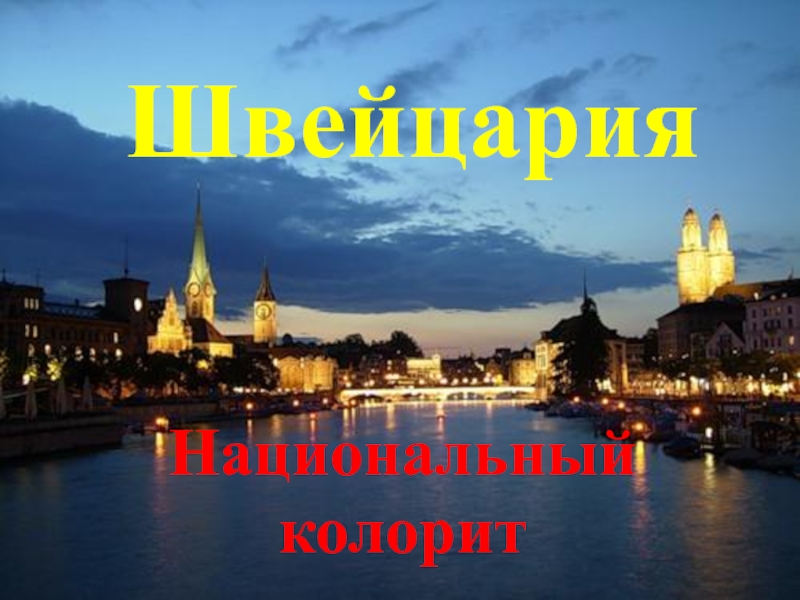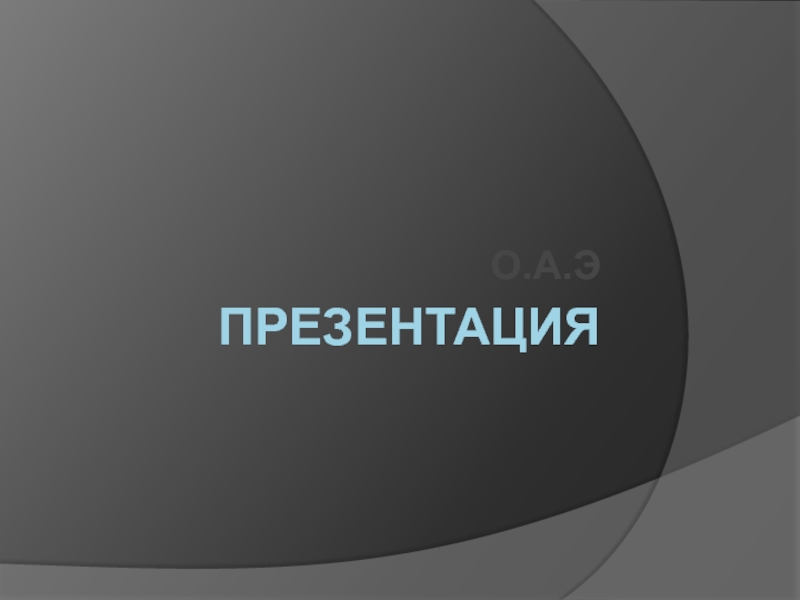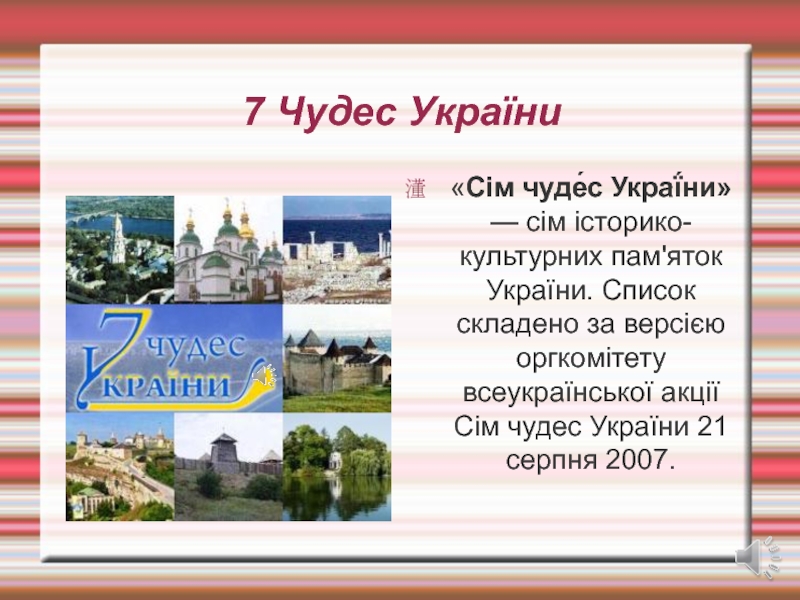- Главная
- Разное
- Дизайн
- Бизнес и предпринимательство
- Аналитика
- Образование
- Развлечения
- Красота и здоровье
- Финансы
- Государство
- Путешествия
- Спорт
- Недвижимость
- Армия
- Графика
- Культурология
- Еда и кулинария
- Лингвистика
- Английский язык
- Астрономия
- Алгебра
- Биология
- География
- Детские презентации
- Информатика
- История
- Литература
- Маркетинг
- Математика
- Медицина
- Менеджмент
- Музыка
- МХК
- Немецкий язык
- ОБЖ
- Обществознание
- Окружающий мир
- Педагогика
- Русский язык
- Технология
- Физика
- Философия
- Химия
- Шаблоны, картинки для презентаций
- Экология
- Экономика
- Юриспруденция
The UK Parliament презентация
Содержание
- 1. The UK Parliament
- 2. Plan: 1. Located of the
- 3. The Parliament of the United Kingdom of Great
- 4. The parliament is bicameral, consisting of an upper house (the House of Lords)
- 5. The House of Commons is a
- 6. House of Commons Meeting place
- 7. House of Lords Meeting place
- 8. The Parliament of Great Britain was formed in
- 9. THE UK PARLIAMENT AND ITS INSTITUTIONS HAVE
- 10. IN THEORY, THE UK'S SUPREME LEGISLATIVE POWER
- 11. Summary history of terms of the Parliament of the United Kingdom
- 13. THE PORTCULLIS PROBABLY FIRST CAME TO BE
- 14. The crowned portcullis came to
- 15. Literature: 1. http://www.britannica.com/topic/Parliament 2.https://en.wikipedia.org/wiki/Parliament_of_the_United_Kingdom 3. http://www.parliament.uk/about/how/role/system/
Слайд 2
Plan:
1. Located of the Parliament;
2. The House of Lords;
3. The House
of Commons ;
4. When was The Parliament of Great Britain formed?;
5. John Bright;
6. Crown-in-Parliament;
7. Summary history of terms of the Parliament of the United Kingdom;
8. Emblem;
9. Literature.
Слайд 3The Parliament of the United Kingdom of Great Britain and Northern Ireland,
commonly known as the UK Parliament or the British Parliament, is the supreme legislative body in the United Kingdom, British Crown dependencies and British overseas territories. It alone possesses legislative supremacy and thereby ultimate power over all other political bodies in the UK and its territories. Its head is the Sovereign of the United Kingdom (currently Queen Elizabeth II) and its seat is the Palace of Westminster in Westminster, London.
Слайд 4The parliament is bicameral, consisting of an upper house (the House of Lords) and a lower house (the House of
Commons). The Sovereign forms the third component of the legislature (the Queen-in-Parliament). The House of Lords includes two different types of members: the Lords Spiritual (the senior bishops of the Church of England) and the Lords Temporal (members of the Peerage) whose members are not elected by the population at large, but are appointed by the Sovereign on the advice of the Prime Minister. Prior to the opening of the Supreme Court in October 2009, the House of Lords also performed a judicial role through the Law Lords.
Слайд 5
The House of Commons is a democratically elected chamber with elections held at
least every five years. The two Houses meet in separate chambers in the Palace of Westminster in London. By constitutional convention, all government ministers, including the Prime Minister, are members of the House of Commons – or, less commonly, the House of Lords – and are thereby accountable to the respective branches of the legislature.
Слайд 8
The Parliament of Great Britain was formed in 1707 following the ratification of
the Treaty of Union by Acts of Union passed by the Parliament of England and the Parliament of Scotland. At the start of the nineteenth century, Parliament was further enlarged by Acts of Union ratified by the Parliament of Great Britain and the Parliament of Ireland that abolished the latter and added 100 Irish MPs and 32 Lords to the former to create the Parliament of the United Kingdom of Great Britain and Ireland. The Royal and Parliamentary Titles Act 1927 formally amended the name to the "Parliament of the United Kingdom of Great Britain and Northern Ireland", 5 years after the secession of the Irish Free State.
Слайд 9THE UK PARLIAMENT AND ITS INSTITUTIONS HAVE SET THE PATTERNS FOR
MANY DEMOCRACIES THROUGHOUT THE WORLD, AND IT HAS BEEN CALLED "THE MOTHER OF PARLIAMENTS". HOWEVER, JOHN BRIGHT – WHO COINED THE EPITHET – USED IT WITH REFERENCE TO A COUNTRY (ENGLAND) RATHER THAN A PARLIAMENT.
Слайд 10IN THEORY, THE UK'S SUPREME LEGISLATIVE POWER IS VESTED IN THE CROWN-IN-PARLIAMENT.
AS, HOWEVER, THE CROWN ACTS ON THE ADVICE OF THE PRIME MINISTER AND THE POWERS OF THE HOUSE OF LORDS HAVE BEEN CURTAILED, DE FACTO POWER IS VESTED IN THE HOUSE OF COMMONS.
Слайд 12
Emblem
The quasi-official emblem of
the Houses of Parliament is a crowned portcullis. The portcullis was originally the badge of various English noble families from the 14th century. It went on to be adopted by the kings of the Tudor dynasty in the 16th century, under whom the Palace of Westminster became the regular meeting place of Parliament. The crown was added to make the badge a specifically royal symbol.
Слайд 13THE PORTCULLIS PROBABLY FIRST CAME TO BE ASSOCIATED WITH THE PALACE OF
WESTMINSTER THROUGH ITS USE AS DECORATION IN THE REBUILDING OF THE PALACE AFTER THE FIRE OF 1512. HOWEVER, AT THE TIME IT WAS ONLY ONE OF MANY SYMBOLS. THE WIDESPREAD USE OF THE PORTCULLIS THROUGHOUT THE PALACE DATES FROM THE 19TH CENTURY, WHEN CHARLES BARRY AND AUGUSTUS PUGIN USED IT EXTENSIVELY AS A DECORATIVE FEATURE IN THEIR DESIGNS FOR THE NEW PALACE BUILT FOLLOWING THE DISASTROUS 1834 FIRE.
Слайд 14
The crowned portcullis came to be accepted during the 20th century
as the emblem of both houses of parliament. This was simply a result of custom and usage rather than a specific decision. The emblem now appears on official stationery, publications and papers, and is stamped on various items in use in the Palace of Westminster, such as cutlery, silverware and china. Various shades of red and green are used for visual identification of the House of Lords and the House of Commons.
